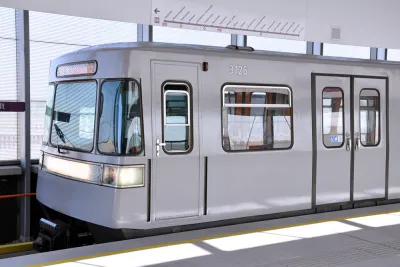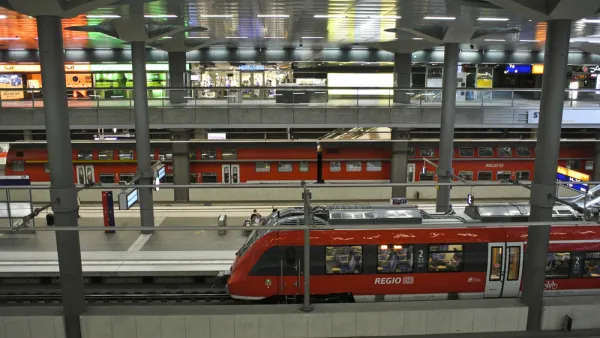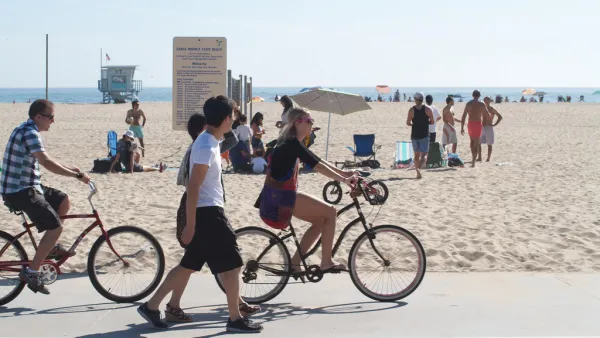How did Vienna, Austria, substantially reduce car trips while increasing bicycling and trips taken by public transportation over 25 years? A new paper published in the International Journal of Sustainable Transportation provides answers.

"Vienna's Path to Sustainable Transport" examines the politics of implementing sustainable transport policies in Vienna over a 25-year period from 1993 to 2014, leading to a reduction in the car mode share of daily trips from 40 percent to 27 percent while doubling cycling mode share and increasing transit mode share from 29 percent to 39 percent.
"The key to Vienna’s success has been a coordinated package of mutually reinforcing transport and land-use policies that have made car use slower, less convenient, and more costly, while improving conditions for walking, cycling, and public transport," notes the abstract.
Two strategies in particular deserve credit, according to researchers Ralph Buehler, professor of Urban Affairs, Virginia Tech; John Pucher, professor emeritus of Urban Planning, Rutgers University, and Alan Altshuler, professor emeritus of Urban Policy and Planning, the John F. Kennedy School of Government at Harvard University:
- Expansion of the U-Bahn or metro, a young system opening in 1978, two years after D.C.'s now-troubled Metro.
- Parking management
On a political level, the abstract notes two additional factors:
- "The continuity of social democratic governments in Vienna since 1945 has provided a crucial political basis for long-term implementation.
- "The Greens have vigorously pushed for accelerating implementation of sustainable transport policies since becoming part of the ruling coalition government in 2010."
Vienna, as well as other Western European cities, have made great progress in moving toward sustainable transportation patterns. This paper provides lessons for other cities to reduce auto-dependence.
FULL STORY: Vienna's path to sustainable transport

Analysis: Cybertruck Fatality Rate Far Exceeds That of Ford Pinto
The Tesla Cybertruck was recalled seven times last year.

National Parks Layoffs Will Cause Communities to Lose Billions
Thousands of essential park workers were laid off this week, just before the busy spring break season.

Retro-silient?: America’s First “Eco-burb,” The Woodlands Turns 50
A master-planned community north of Houston offers lessons on green infrastructure and resilient design, but falls short of its founder’s lofty affordability and walkability goals.

Test News Post 1
This is a summary

Analysis: Cybertruck Fatality Rate Far Exceeds That of Ford Pinto
The Tesla Cybertruck was recalled seven times last year.

Test News Headline 46
Test for the image on the front page.
Urban Design for Planners 1: Software Tools
This six-course series explores essential urban design concepts using open source software and equips planners with the tools they need to participate fully in the urban design process.
Planning for Universal Design
Learn the tools for implementing Universal Design in planning regulations.
EMC Planning Group, Inc.
Planetizen
Planetizen
Mpact (formerly Rail~Volution)
Great Falls Development Authority, Inc.
HUDs Office of Policy Development and Research
NYU Wagner Graduate School of Public Service



























